Last night, I couldn’t find a campsite in the dark and rain, so I parked and slept in the day-use lot at Barretts Park Campground. When I crawl out of my truck this morning, I’m about two hundred feet from the Beaverhead River, which flows beside a four-hundred-foot-wide and sixty-foot-high rock formation Lewis and Clark called “Rattlesnake Cliff.”
I grill a pancake for breakfast, heat some water to wash my face, and walk through a sparse stand of cottonwoods to the river, hoping to see a trout feeding. But the greenish-brown water flows north toward Dillon with no sign of life. A bronze plaque erected by the Daughters of the American Revolution in 1935 says an ancient Indian trail, the great Beaverhead wagon road, and the first railroad into Montana all passed through this site. My thoughts drift back to when the smell of livestock hung heavy in the air, sparks flew from the locomotive smokestacks, and iron wheels clanked on iron tracks. But soon, the raucous chorus of AC/DC’s “Highway to Hell” blasts from a campsite, yanking me back to the now.
I break camp, which only entails folding my aluminum table, rinsing out my stainless steel pot and pan, and stowing my single-burner butane stove. When I reach the dam, a flotilla of drift boats lines up for the launch. The guides prepare their vessels for departure, checking and rechecking to ensure they have all the rods, reels, and flies they’ll need for the day. The clients fidget the way we do when our job is to stand around and watch someone else do the work. For many of us, it’s the most awkward part of hiring a guide. We know they neither want nor need our help, but we can’t escape feeling we should do something. Unable to help, we stand around like misplaced props on a movie set.
Without someone to guide me, I am disoriented and overwhelmed, so I drive to a fly shop near the dam. It’s a little A-frame building with a generic, banner-style sign over the door that simply says, “Fly Shop.” Inside, they have a few pairs of waders for sale, a well-stocked bin of flies, several stickers and tee shirts with pigs and toads painted to look like rainbow, brown, and brook trout, and a pegboard display with some leaders, tippets, sinkers, and tools. The guy behind the counter recommends two tiny candy-red midges, another with black and white stripes like a zebra, and some pheasant tail nymphs he says always work. When I ask for advice about where to fish, he says, “No secrets here. Just find an empty spot. The fish are everywhere.”
I drive north on High Bridge Road and park in the first empty pull-off. The river is forty feet from my truck, down a well-worn footpath through some rocks between clusters of sagebrush. I assemble my rod, pull on my waders, and take the short hike to the river. It’s still cold, so I tell myself the snakes will stay in the gopher holes and crevices until the sun warms the rocks. I don’t know if that’s true, but I make it to the river without being shaken, rattled, or rolled. I sit on a boulder and prepare a leader for my nymphs by squeezing two split shots on its end. Above that, I tie two flies on droppers that extend at right angles from the leader. Ahead of all of that, I attach a small balloon-like thingamabob that is actually called a Thingamabobber.
A drift boat floats downstream toward me while I finish preparing my leader. The clients flip their flies tight to my side of the river, and when the guide sees me, he tells them to cast toward the other bank. Unknowingly, they gifted me a valuable clue. I planned to step into the river and fish in the deeper water, but after seeing how they would have fished tight toward my bank, I stay on the rocks and cast just beyond where I can see the bottom. I flip my rig upstream, watch the little bobber float back, then pick it up when it drags below me. With the cadence of an intermittent wiper, I toss the rig back upstream. The bobber shakes each time the split shots bounce off the bottom. I lift the line when one shake looks slightly suspicious, and the rod bends.
I think I’m snagged until I feel the familiar shake of a hooked fish. I can’t move it upward, so I extend my rod to pressure the trout toward the middle of the river. It dawdles initially, then uses the faster mid-stream current to propel downstream. A boat floats by with two men fishing toward both banks. Their guide gives me a nod, but neither of the anglers seems to notice—or care—that I’m fighting a fish. Two more boats do the same thing, reducing what I believe to be a noteworthy event into some mundane business as usual. I see myself as the Cardinal’s David Freese hitting the walk-off homer to force game seven against Texas in the 2011 World Series. They see me as a backup catcher taking spring training batting practice. But I must be right about this: It’s an eighteen-inch brown with a tail like a square-tipped canoe paddle. The fish hardly needs resuscitation—a sign that reveals it has headlined this show before.
I catch four more trout, each between fourteen and eighteen inches, then decide I’ve had enough nymph fishing. It’s past 11 a.m., and a trout has risen steadily on the far bank for half an hour. I want to catch it, but the river is sixty feet wide and flows at several speeds across its span. I need to get closer before making a cast, so I sneak into the water. My first step sinks me knee-deep. My second puts the river’s surface about ten inches below the top of my waders. I slide my foot forward until I feel the bottom fall away. I need to get closer, so I take another step and ask the fish gods to show mercy.
Swimming in waders is never easy. I use one hand like a five-pronged oar, the other to keep my rod safe above my head. A guide has anchored his boat about a hundred feet downstream, and I hear him and his clients laughing. Hell, I’m laughing too. But I’d like to get out of the Beaverhead River before I float down to them. About twenty feet into my swim, I grab onto some sedge and pull myself into a place where I can stand. The guide in the boat asks if I’m okay, and when I hold up my thumb as a sign of triumph, he holds up all eight fingers and two thumbs to give me a perfect score. I take an exaggerated satirical bow.
When another boat floats by, I’m standing beside my truck in my Venetian-red scotch plaid boxer shorts, holding my waders by the neoprene booties while water pours from the opening that used to be around my chest. “I’ve been there,” says the guy in the back of the boat. After pulling on my jeans, I make a turkey and Swiss sandwich, open a Miller Lite, and stand in the sun to dry off. I don’t usually have a beer with lunch, but I don’t typically swim in my waders either. Unthreatened by my antics, the trout near the far bank continues to eat its lunch too. When another boat approaches, I ask the guys if they have a dry-fly rod rigged and ready to go. They do, and the guide anchors above the fish to position the man in the bow for a downstream cast.
Perhaps I should be upset to stand next to my SUV and watch these guys catch my fish, but I’m not. The clients tell me they’re lifelong friends from New York who’ve been fishing together in Montana for twenty years. When I tell the guys what happened when I tried to catch that fish, the guide laughs and says these trout rise on the west bank in this stretch of the river precisely for that reason. Catching the fish will be challenging, even from a boat with a guide who can position it. The conflicting currents that deliver the real flies make it nearly impossible for an angler to fool the fish with a fake one. This trout seems to know this, and each time it rejects the counterfeit, it eats the next natural fly that floats by. Like a huckster in a shell game, the trout always knows which shell covers the pea and which ones don’t.
I feel bad for the fisherman, but he stays upbeat. He puts the fly exactly where he needs to put it and sets the hook precisely when he needs to set it. This trout is tricky, and the where and when are not what they appear to be. The anglers switch places, and the other guy takes several shots at the fish. When he makes his first cast, I swat a gnat from the back of my neck. A few seconds later, I smack another one. When the next one lands on my shoulder, I grab it between my index finger and thumb. But it’s not a gnat. It’s an ant. And when I realize a hundred more are marching up my leg, I rip off my pants and madly shake the ants from them. For the second time in an hour, I stand on the bank of the Beaverhead River, displaying my taste in boxer shorts to everyone who floats or drives by. The guide in the boat laughs and tells me he’s been there.
The guidebooks say the Beaverhead consistently produces more large trout than any other river in Montana, and I believe that. But I’m standing beside a relatively busy road where I’m buzzed by a Dodge Ram or Chevy Silverado every seven minutes, and an interstate highway on the other side of the river rumbles with Peterbilts and Freightliners hauling lumber, toilet paper, whiskey, and other vital goods to the fine people of Idaho and Montana. And in the river, drift boats float by with the frequency of rubber ducks at a carnival fair. The fishing and catching have been great fun, and I can’t recall another time I’ve stripped to my skivvies beside a river twice on the same day. But half a day of this is enough, and I need to move on.
I drive back to the town of Barretts and stop at the truck stop beside the highway. My tank needs gas, my cooler needs ice, and my hygiene needs servicing. I ask the lady behind the counter if I can get a shower here, and she points to a sign on the wall that tells me how much money I need to pay and what rules I need to obey. I don’t recall ever breaking a rule in a shower, and I can’t imagine violating any of the ones I see on the sign, especially since I don’t have a goat. Frankly, I can’t envision anyone breaking these rules, but this truck stop is on Interstate 15, a major route connecting Canada to Mexico. So I try not to imagine anything at all.
I stop in Dillon to buy groceries, then briefly visit the Anderson and Platt fly shop. I don’t really need anything, but I pick up some flies and a couple more Thingamabobbers. Mostly, I want to pet the dogs. About forty minutes after getting back on the interstate, I exit west onto Highway 43. The air temperature dropped after yesterday’s storms, and I have a hunch that the Big Hole River will fish well this evening. If it does, I want to be there.
Editor's note: "I've been there" is an excerpt from the upcoming book, A Cast Away in Montana, from longtime and frequent Hatch Magazine contributor Tim Schulz. The book will be released on May 7, 2024 and is now available for pre-order through Amazon. To pre-order a copy signed by Tim, as well as renowned painter Bob White, whose artwork graces A Cast Away in Montana, visit Bob White Studio.




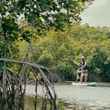
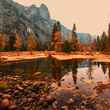




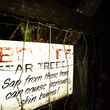




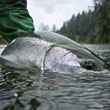



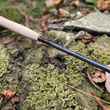
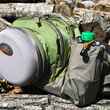



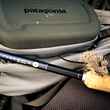
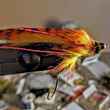



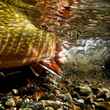
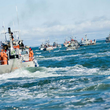
Comments
Glenn Dotter replied on Permalink
Anyone who fishes in waders will sooner or kater swim in them. I've been there too. Just be sure to wear a belt and when you are in up to your butt, let thair out.
Pages